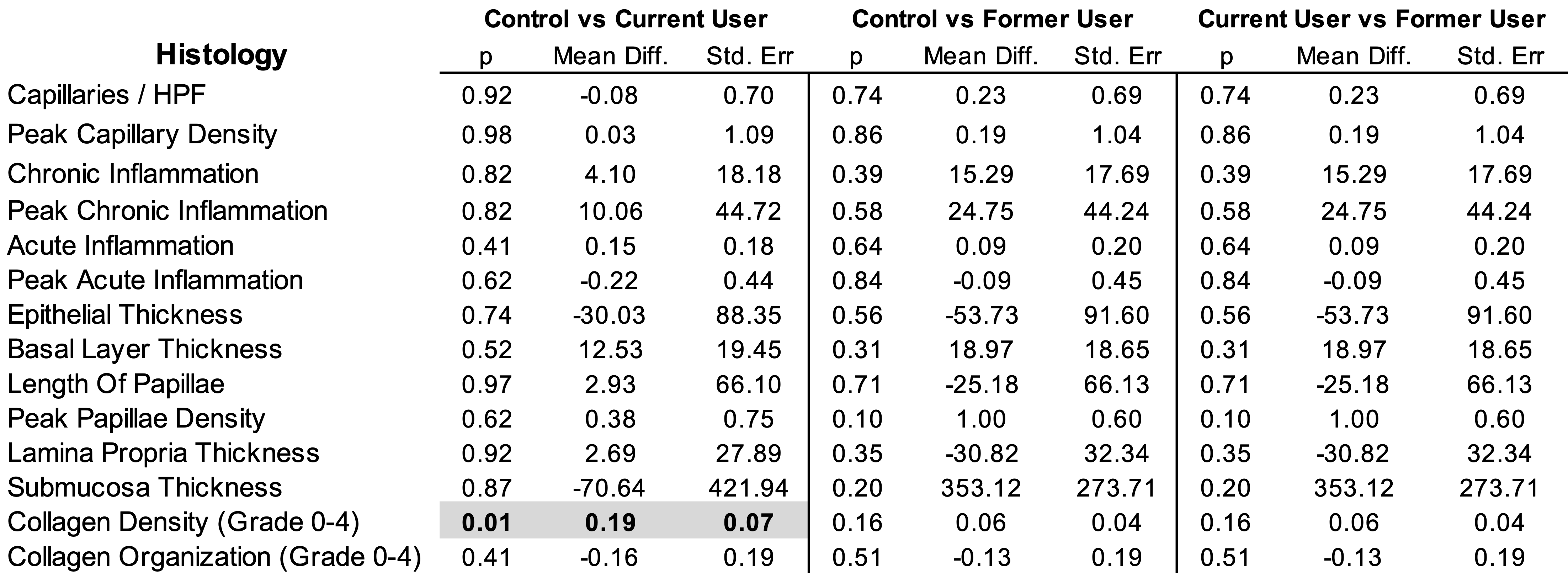Back
Poster, Podium & Video Sessions
Moderated Poster
MP22: Trauma/Reconstruction/Diversion: Urethral Reconstruction (including Stricture, Diverticulum) I
MP22-15: The Effect of Tobacco Use on Buccal Mucosa: An Evaluation of Histologic Changes
Saturday, May 14, 2022
8:45 AM – 10:00 AM
Location: Room 228
Connor Policastro*, Joshua Sterling, Daniel Zaccarini, Baylee Porter, Guanqun Li, Gennady Bratslavsky, Dmitriy Nikolavsky, Syracuse, NY

Connor G. Policastro, MD
SUNY Upstate Medical University
Poster Presenter(s)
Introduction: Tobacco use remains prevalent throughout the world and patients with a history of tobacco use are often presumed to have inherently damaged buccal mucosa, making it unsuitable for urethroplasty. Here we evaluate histologic changes in the buccal mucosa grafts (BMGs) of current and former tobacco users compared to non-tobacco users (Controls). Our hypothesis is current and former smokers would have clear histologic differences.
Methods: Retrospective histologic evaluation by a pathologist blinded to the groups was conducted on BMGs in controls, current (Group 1) and former tobacco users (Group 2), either smoking or chewing tobacco, from 2018 to 2020.
Parameters evaluated were: Capillary density, collagen density and organization, acute and chronic inflammation, dermal papillary length and density, and epithelial, lamina propria, basal layer, and submucosal thickness. Independent samples T-Tests were used for pairwise analysis.
Results: BMGs were available for 83 patients. 16 patients were current tobacco users, half of which used chewing tobacco. 28 patients were former tobacco users, including two chewers, from which 16 with the greatest pack year history were selected. Current and former tobacco users were age matched as able to controls, given the small cohort. The final cohort was 64 patients: 16 current, 16 former, 32 controls. Demographics across the groups differed only in that chewers were younger than smokers (p=0.001) and Group 1 was younger than Group 2 (p=0.025).
On blinded histologic comparison, the only difference found was that controls had significantly higher collagen density (p=0.01) vs Group 1, which only amounted to a mean difference of 0.19 on a scale of 0-4.
Conclusions: This pilot study failed to prove our hypothesis. We were unable to find clear and clinically significant histologic differences between patients without a history of tobacco use and current or former users. We were also unable to find differences between current and former users.
Source of Funding: None

Methods: Retrospective histologic evaluation by a pathologist blinded to the groups was conducted on BMGs in controls, current (Group 1) and former tobacco users (Group 2), either smoking or chewing tobacco, from 2018 to 2020.
Parameters evaluated were: Capillary density, collagen density and organization, acute and chronic inflammation, dermal papillary length and density, and epithelial, lamina propria, basal layer, and submucosal thickness. Independent samples T-Tests were used for pairwise analysis.
Results: BMGs were available for 83 patients. 16 patients were current tobacco users, half of which used chewing tobacco. 28 patients were former tobacco users, including two chewers, from which 16 with the greatest pack year history were selected. Current and former tobacco users were age matched as able to controls, given the small cohort. The final cohort was 64 patients: 16 current, 16 former, 32 controls. Demographics across the groups differed only in that chewers were younger than smokers (p=0.001) and Group 1 was younger than Group 2 (p=0.025).
On blinded histologic comparison, the only difference found was that controls had significantly higher collagen density (p=0.01) vs Group 1, which only amounted to a mean difference of 0.19 on a scale of 0-4.
Conclusions: This pilot study failed to prove our hypothesis. We were unable to find clear and clinically significant histologic differences between patients without a history of tobacco use and current or former users. We were also unable to find differences between current and former users.
Source of Funding: None


.jpg)
.jpg)